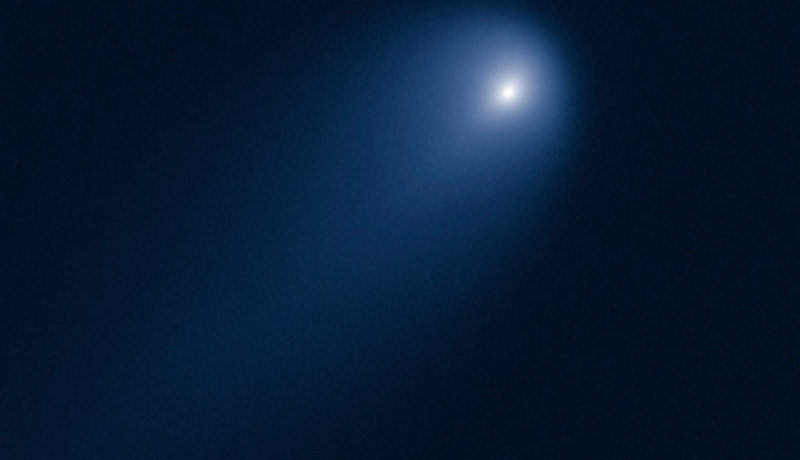The Hubble telescope has confirmed spotting the most massive comet to date.
Five hunderd trillion tons, and it is heading in our direction. The comet has a width larger than the state of Rhode Island. The nucleus is analogous to a “Dirty Snowball”.
The following written content from Amanda Kooser

Credits: NASA, ESA, Man-To Hui (Macau University of Science and Technology), David Jewitt (UCLA); Image processing: Alyssa Pagan (STScI)
Goodness gracious great ball of ice and dust!
NASA’s Hubble Space Telescope team likens comets to dirty snowballs with spectacular multimillion-mile-long tails. Comets look fuzzy, but they have a packed nucleus of ice and dust. Hubble has now confirmed the largest comet nucleus ever discovered, a stunner of a snowball that could be 85 miles (137 kilometers) across.
Hubble is a joint project of NASA and the European Space Agency. It often gazes at distant galaxies, but scientists were able to use it to help measure the nucleus of comet C/2014 UN271 (Bernardinelli-Bernstein). It’s a whopper. An absolute unit, about 50 times larger than most known comet nuclei.
Remember comet Neowise, which came close to Earth for a visit in 2020? Neowise’s nucleus is about 3 miles (5 kilometers) in diameter.
The 4-billion-year-old comet — hailing from a theoretical distant comet “nesting ground” called the Oort Cloud — was first observed in 2010. “Hubble observations in 2022 were needed to discriminate the solid nucleus from the huge dusty shell enveloping it, with help from radio observations,” NASA said in a statement on Tuesday. That dusty shell is called a coma.
Hubble observed a spike of light coming from the comet. The data helped astronomers create a model of the comet’s coma, which could then be subtracted to determine the likely size of the nucleus. The team also found the nucleus is “blacker than coal,” as described by astronomer David Jewitt of the University of California at Los Angeles. Jewitt is co-author of a study on the comet published in The Astrophysical Journal Letters this week.

Comet C/2014 UN271 claims the nucleus crown from comet C/2002 VQ94, which sports an estimated 60-mile (97-kilometer) nucleus.
The jumbo comet won’t be coming close to Earth, but its bulk gives researchers a better idea of the size range of comets in the Oort Cloud. Said Jewitt, “This comet is literally the tip of the iceberg for many thousands of comets that are too faint to see in the more distant parts of the solar system.” Read more from Cnet





